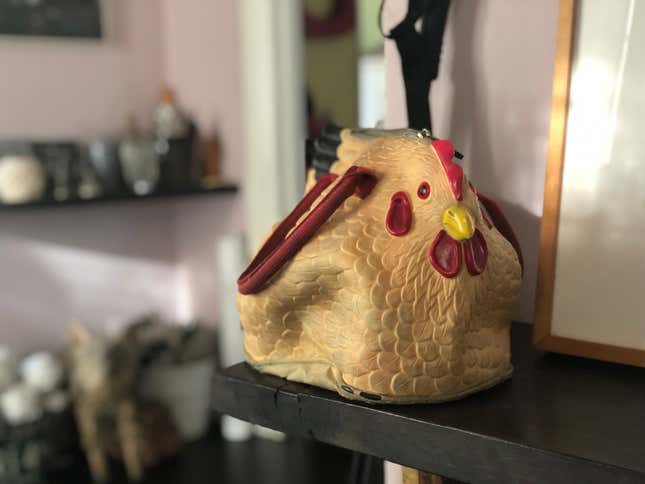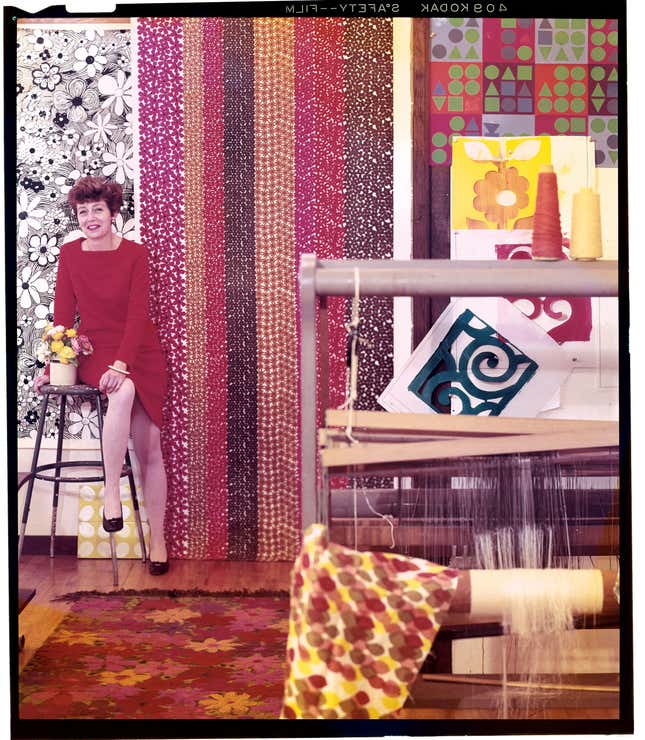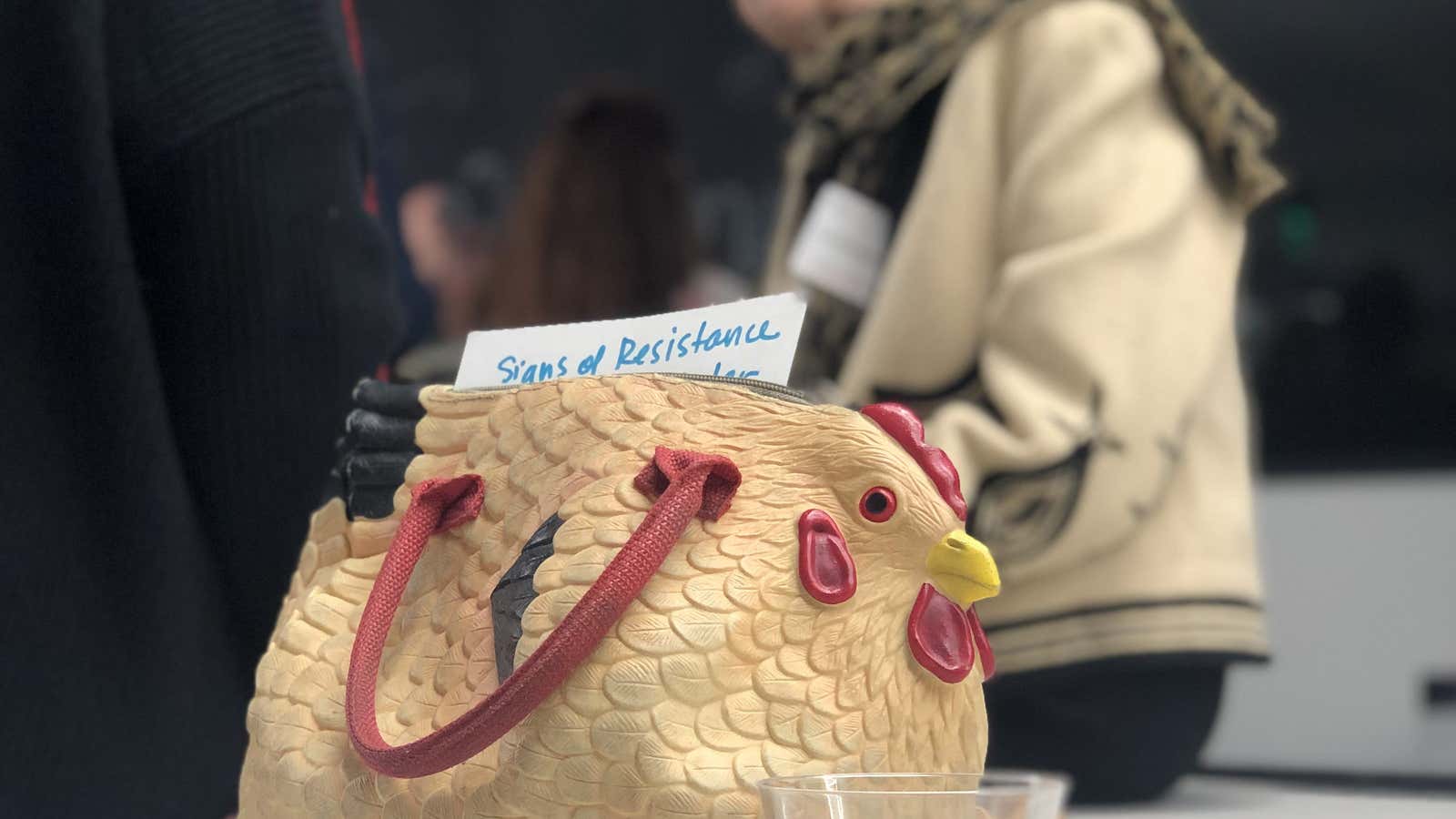In preparation for a trip to New York City, 90-year-old Gere Kavanaugh is stuffing a rubber chicken into her suitcase. The celebrated Los Angeles-based designer is giving a lecture at the Cooper Hewitt Smithsonian Design Museum next month and a goofy hen-shaped handbag is an essential element of her networking ensemble. “The chicken purse is definitely coming,” she says.
In lieu of fancier designer bags, Kavanaugh says the capacious $25 rubber chicken purse has proven to be the perfect accessory for almost any occasion. She delights in how strangers at the grocery store, farmers market, or industry events openly admire the rubber chicken dangling from the crook of her elbow.
“If I had a dollar for every time someone asks about it, I would be a very rich lady!” she says gleefully. “I don’t have to ‘work a room’—people naturally come to me.”
The chicken purse has served Kavanaugh especially well in design circles. At the last AIGA Design Conference in Pasadena, Kavanaugh’s humorous bag somehow dismantled the intimidation factor around her stature as a “design legend” and gave students and young designers an easy excuse to approach her.
“Kavanaugh knows EVERYONE, and everyone seems to know her,” says Louise Sandhaus, co-author of A Colorful Life: Gere Kavanaugh, Designer. Kavanaugh grew up in Memphis, Tennessee, and made a name for herself designing imaginative displays for General Motors and, later, for architect Victor Gruen, the “father of the American shopping mall.” Eventually Kavanaugh opened her own design shop, working in textiles, furniture, housewares, store interiors, and graphics. “She has been a mighty presence in the Los Angeles design scene since 1960s. And she has always dressed for the show, whether clad in her own designs or costumed in garb from different cultures,” Sandhaus writes in A Colorful Life.
“How can you not admire a woman who has the bold audacity to carry a rubber chicken purse?” asks Suzanne Isken, executive director of LA’s Craft Contemporary museum.

For a designer of sophisticated modern interiors and objects, an off-the-rack novelty bag may seem like an unusual choice. But in perusing Kavanaugh’s eclectic body of work, one could see how the chicken purse aptly represents her whimsical design sensibility and affable Southern disposition. “It was just such a hoot, I had to have it,” says Kavanaugh, who bought the purse from a museum gift shop. “This is actually my second chicken purse,” she adds. “I wore out the first one.”
Putting yourself together
The rubber chicken stratagem is an aspect of Kavanaugh’s philosophy about professional self-presentation. She believes that arbiters of good taste, like designers, could do well by being more purposeful with what they wear to client meetings and public events. “People in the design world don’t even look like they’re in the design world. They dress so boringly,” she observes.
She laments how sharp suits and tailored shifts from her heyday in the 1960s and 1970s have given way to the severe, all-black uniform designers and architects often embrace—or worse, lazy jeans and sloppy t-shirts that creative types like to throw on, with a decreasing sense of irony. It doesn’t need to be an elaborate outfit, she says. A well-chosen accessory—nice-looking shoes, a scarf, or a winsome rubber chicken in her case—would do the trick. Kavanaugh believes that anyone who makes an effort these days gains an advantage, “because the rest of the world is pretty drab.”

Apart from the rubber chicken (and a back-up rubber fish purse) Kavanaugh also likes to wear unique jackets that she’s amassed during her travels over the years. Like her purse, they also often spark rich personal exchanges about craft, cultural heritage, color—a vast improvement on the ho-hum greetings at most networking events. “By buying these kinds of clothes you can have interesting experiences that you can’t have at H&M,” Kavanaugh says.
